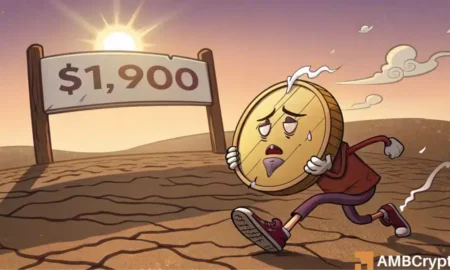Bitcoin Miners’ Selling Pressure Hits Historic Low: What It Means for the Market
Bitcoin miners have recently exhibited a marked reduction in selling pressure, reaching its lowest levels since May 2024. This development signals potential shifts within the market landscape, reflecting patterns that have historically been linked to periods of increased volatility. With familiar trends emerging in Bitcoin’s hashrate, investors must carefully assess whether this phase indicates strengthening fundamentals or if it serves as a precursor to renewed instability.
Understanding Miners’ Selling Pressure
Data shows that Bitcoin miners are currently experiencing selling pressure at a historic low. This situation is notably rare, and historical data suggest that such conditions often precede periods of sideways consolidation in prices or outright declines. While there have been instances in the past—specifically December 2012, September 2013, segments of 2016, and July 2021—where low selling pressure led to positive market reactions, these occurrences are exceptions rather than the rule. Generally, the lack of selling by miners can create an underlying instability that might not be readily visible, raising concerns for investors.
Hashrate Trends Raise Concerns
Bitcoin’s hashrate reached an all-time high in April 2025, echoing a similar peak observed in April 2021. Both instances were followed by pronounced declines in the Bitcoin price, establishing a concerning pattern that could repeat. The date of April 14 has marked critical inflection points in Bitcoin’s history, with local tops occurring in both 2021 and 2023. Although 2025 has yet to see a price peak, the cooling hashrate raises questions about potential miner stress. Could we be witnessing the early signs of a downturn that typically precedes substantial market corrections?
Year-to-Date Miner Behavior and Implications
In 2025, Bitcoin miners have strategically capitalized on early-year price strengths, resulting in their current low selling pressure. This behavior could be interpreted as a display of resilience among miners. However, it also raises concerns about complacency in the market. If Bitcoin’s price were to stagnate or experience further declines, the looming risk of miner capitulation becomes more pronounced. Should this stress emerge, we could see a new wave of forced selling, tipping Bitcoin into a phase of heightened volatility, exacerbating existing market tensions.
Analyzing Bitcoin’s Price Outlook
As of now, Bitcoin is hovering near the $95,000 mark, but various momentum indicators urge caution among investors. The Relative Strength Index (RSI) is nearing overbought territory, indicating possible exhaustion among buyers. Parallelly, the On-Balance Volume (OBV) has leveled off after a steady uptrend, signalling a waning buy pressure. While Bitcoin has so far managed to hold onto its recent gains, the lack of strong volumetric support combined with increased RSI stress suggests a heightened risk of a near-term pullback. Without a surge in bullish momentum, a period of consolidation or a minor correction may be unavoidable before attempting a breakout above the $95,500 threshold.
Conclusion: Navigating Uncertainty in a Volatile Market
As Bitcoin’s miners continue to hold back on selling, the implications for the market are multifaceted. While low selling pressure can reflect resilience, historical precedents suggest that this might also signify underlying instability. Investors must remain vigilant, weighing the potential for both bullish scenarios and the risk of increased volatility. With Bitcoin’s price precariously close to significant resistance levels, understanding the dynamics at play for miners and hashrate patterns will be essential for navigating this evolving market landscape. In these uncertain times, a well-informed strategy could prove critical for capitalizing on potential opportunities while mitigating risks.
















